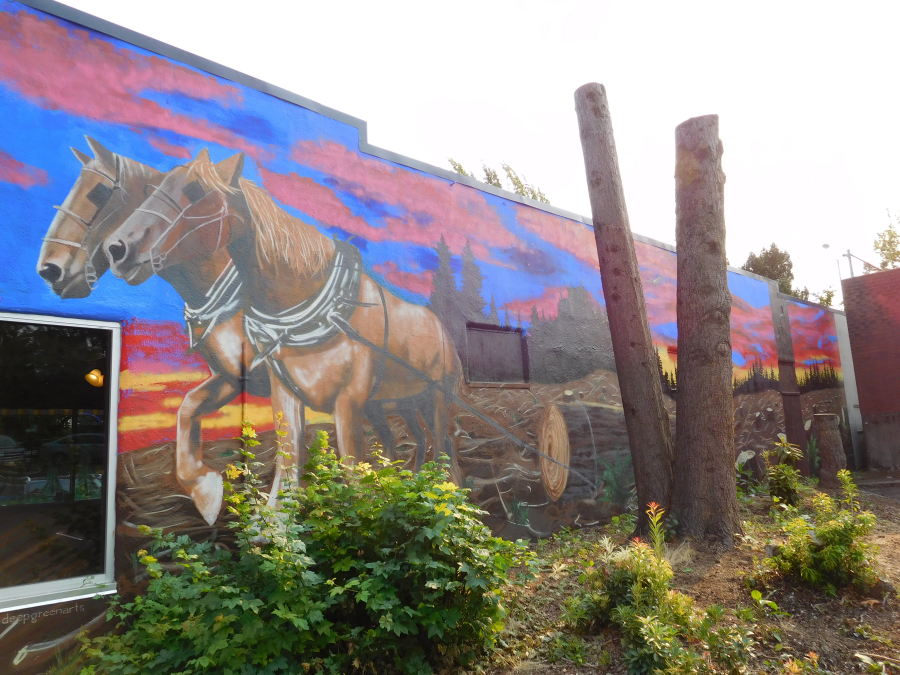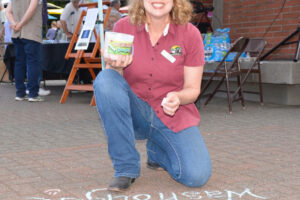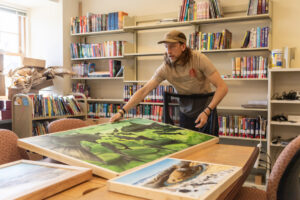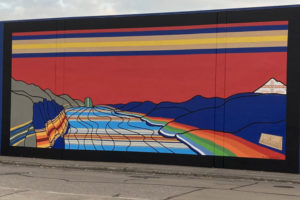Anyone who has been in Camas or Washougal has probably seen one or more examples of Travis London’s artwork.
London’s art includes the recently completed “Historic Lager,” a painting of two horses pulling a log, on an exterior wall of the Big Foot Inn, 105 Pendleton Way, in downtown Washougal. The Washougal Arts and Culture Alliance (WACA) suggested the name for the artwork that was funded by a $3,900 Washougal lodging tax grant.
People who see London’s paintings may describe them as murals, but he prefers to call his work, “street art.”
“I try to express my passion for social and environmental justice, which includes a lot of history in my work,” he said.
London, an elementary teacher for the Vancouver School District, combines his interest in history and the environment with the “Historic Lager” art.





